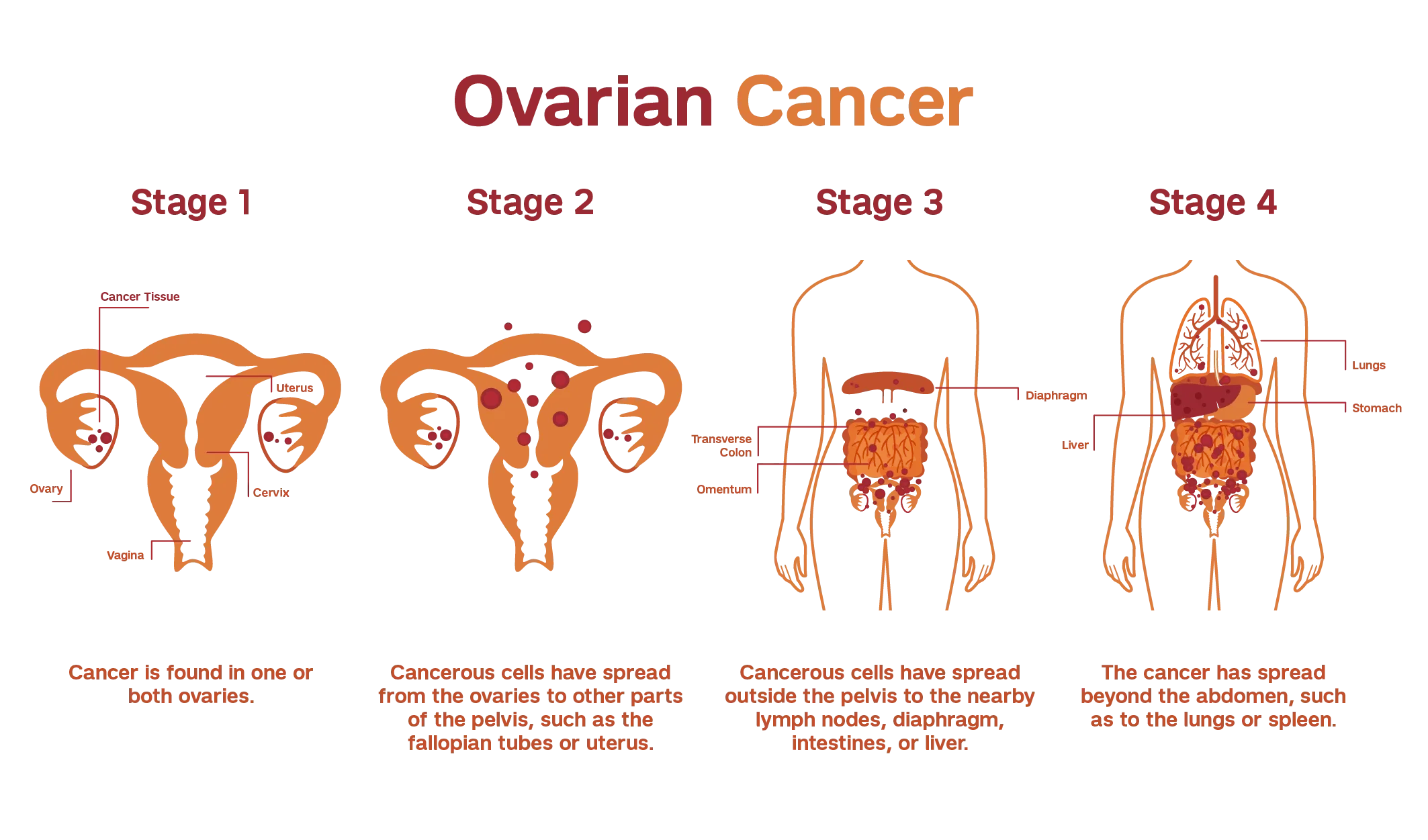Learn the early warning signs of ovarian cancer, their impact on women’s health, and steps for early detection and prevention.
Introduction
Ovarian cancer is often called the “silent killer” because its early symptoms are subtle and easily mistaken for common health issues. For many women, the disease is not diagnosed until it has advanced, making treatment more challenging.
Understanding early ovarian cancer signs is essential for protecting women’s health and improving survival rates.
Women’s health experts emphasize that awareness and vigilance are the first lines of defense. By recognizing the body’s warning signals, women can seek medical attention sooner and improve their chances of successful treatment.
This article highlights the early warning signs of ovarian cancer, explains why they occur, and offers practical advice on what steps to take if symptoms appear.
Early Warning Signs of Ovarian Cancer
Unlike other cancers, ovarian cancer does not always present with obvious or unique symptoms. Instead, the signs often resemble digestive or hormonal issues, making them easy to dismiss. Key early symptoms include:
-
Persistent bloating: Frequent swelling of the abdomen, not linked to diet or menstrual cycle.
-
Pelvic or abdominal pain: Ongoing discomfort or pressure in the lower abdomen or pelvis.
-
Changes in appetite: Feeling full quickly or experiencing loss of appetite without reason.
-
Frequent urination: Needing to urinate more often or urgently, unrelated to fluid intake.
-
Unexplained fatigue: Constant tiredness even after adequate rest.
-
Changes in menstrual cycles: Irregular or heavier-than-usual bleeding.
-
Unexplained weight loss: Losing weight without changes in diet or exercise.
When these symptoms persist for more than two weeks, they should not be ignored.
Why These Symptoms Occur
The early warning signs of ovarian cancer are often linked to the way tumors grow and affect surrounding organs:
-
Bloating and abdominal pain occur as tumors press against the digestive system and abdomen.
-
Urinary changes result from tumors pressing on the bladder.
-
Appetite loss and fullness happen when ovarian growths limit space in the stomach.
-
Hormonal changes caused by ovarian tumors can affect menstrual cycles and fatigue levels.
Because these signs overlap with conditions such as irritable bowel syndrome (IBS), urinary tract infections (UTIs), or hormonal fluctuations, women’s health practitioners recommend monitoring frequency and persistence as key indicators.
Ovarian Cancer Staging
Ovarian cancer staging describes how far the disease has spread at diagnosis. It is a critical factor in treatment planning and survival rates.
-
Stage 1: Cancer is found in one or both ovaries. Symptoms may be minimal or absent.
-
Stage 2: Cancer spreads from the ovaries to other pelvic organs, such as the uterus or fallopian tubes.
-
Stage 3: Cancer has spread beyond the pelvis to nearby lymph nodes, diaphragm, intestines, or liver surface.
-
Stage 4: The disease has spread outside the abdomen to distant organs like the lungs or spleen.
Visual Reference: The staging image illustrates how ovarian cancer progresses through these stages, highlighting why early detection is so critical.
Steps for Early Detection
While there is no single screening test for ovarian cancer, women can take proactive steps to protect their health:
-
Track symptoms: Keep a journal noting the frequency and intensity of bloating, pain, or appetite changes.
-
Schedule regular checkups: Annual gynecological exams help detect abnormalities early.
-
Know your family history: A family history of ovarian or breast cancer may increase risk, making genetic testing (BRCA1/BRCA2) important.
-
Request further tests: If symptoms persist, ask for a pelvic exam, ultrasound, or CA-125 blood test.
-
Advocate for yourself: If dismissed, seek a second opinion—early intervention is crucial.
Prevention and Best Practices
Although ovarian cancer cannot always be prevented, certain lifestyle choices and medical interventions can reduce risk:
-
Maintain a healthy diet and weight: Balanced nutrition supports overall women’s health and lowers cancer risks.
-
Use oral contraceptives (if appropriate): Some studies suggest birth control pills reduce ovarian cancer risk.
-
Pregnancy and breastfeeding: Both have been linked to lower lifetime risk.
-
Avoid harmful substances: Limit alcohol, smoking, and environmental toxins.
-
Regular screenings for high-risk women: Especially important for those with genetic predispositions.
Frequently Asked Questions (FAQ)
1. Can ovarian cancer be detected early?
Ovarian cancer is difficult to detect early, but paying attention to persistent symptoms and seeking medical evaluation can improve early diagnosis.
2. Are ovarian cancer signs different from PMS symptoms?
Yes. While PMS symptoms are temporary and cycle-related, ovarian cancer signs such as bloating, pelvic pain, and appetite loss persist for weeks or worsen over time.
3. Who is most at risk for ovarian cancer?
Women over 50, those with a family history of ovarian or breast cancer, and women with certain genetic mutations (BRCA1/BRCA2) face higher risks.
4. Is ovarian cancer hereditary?
Yes, about 10–15% of ovarian cancer cases are linked to inherited genetic mutations. Genetic counseling and testing can help assess risk.
5. Can lifestyle changes prevent ovarian cancer?
While they cannot eliminate risk, healthy lifestyle choices such as balanced nutrition, regular exercise, and avoiding smoking can lower overall cancer risk.
Conclusion
Ovarian cancer is a serious health threat, but it does not have to remain a silent disease.
By recognizing early warning signs such as bloating, pelvic pain, and appetite changes, women can take proactive steps to protect their health.
Awareness, regular checkups, and open conversations with healthcare providers remain the best tools for early detection and effective treatment.


